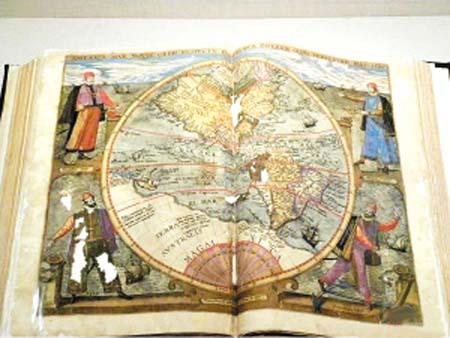Matteo Ricci exhibition marks anniv.
2010-03-04 09:45 BJT
Actually the cultural exchanges between China and the rest of the world started long ago. Catholic missionary, Matteo Ricci, introduced western culture, art and science to China during the Ming Dynasty nearly 500 years ago.
A priest and intellectual, Ricci helped created the first cultural bridge between China and the West. 2010 marks the 400th anniversary of his death. An exhibition at Beijing's Capital Museum is showcases his life journey and the communications between China and the West.
A selection of 200 works from leading Italian and Chinese museums are on display at the exhibition. Among the works are paintings by some of the most influential Italian artists of the Renaissance period, including Raphael, Titan and Lorento Lotto. Painter and art critic, Shui Tianzhong, interprets the importance of the paintings.
Shui Tianzhong, Researcher, China Art Academy, said, "Ricci presented many gifts to the emperor, and including portraits of God and the Virgin Mary. Those paintings surprised the ministers and the royal family. From that Chinese started to know western religions, especially Catholicism. It was also the prelude of the art exchange between China and the West."
Ricci's astronomy and geography tools he brought to China are also on display at the museum. The exhibits evoke aspects of Chinese civilization during Ricci's time, including handicrafts, paintings, the language, literature and the three great religions: Confucianism, Buddhism, and Taoism.
Ricci was the first person to win the trust of the Chinese, and evoke their curiosity about the western world. The exhibition will run in Beijing until March the 20th, before heading to Shanghai and Nanjing.
 |
| An exhibition at Beijing's Capital Museum is showcases his life journey and the communications between China and the West. |
Related stories
- Matteo Ricci: Building bridges in Ming China 2010-02-09
- Matteo Ricci, bridge between Italy, China 2010-01-15

 Mail
Mail Share
Share Print
Print


 Video
Video









 2009 China Central Television. All Rights Reserved
2009 China Central Television. All Rights Reserved